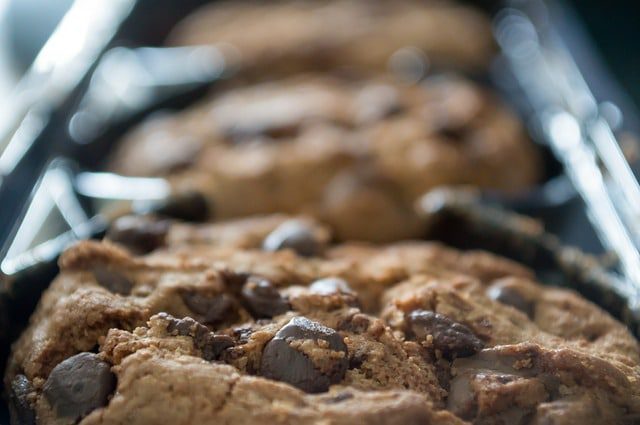One of the core ingredients in baking, a good quality cocoa powder can take your bakes to a different level altogether. Or imagine a cup of steaming hot cocoa on a rainy night? But what do you do when you run out of cocoa powder and really want to make something? That’s when these cocoa powder substitutes step in. But before that, let’s talk about cocoa powder a bit.
Table of Contents
How Is Cocoa Powder Made?
Cocoa powder is made from pressing the chocolate liquor after removing a third-quarter of the butter inside cocoa or cacao beans. Whatever is left behind is dried and powdered to make cocoa powder.
Types of Cocoa Powder
Now, there are two types of cocoa powder: the natural cocoa powder and the Dutch-process cocoa powder.
Natural cocoa powder: Natural cocoa powder is obtained from powdering roasted cocoa beans. It’s bitter, carries a strong flavor of chocolate and is acidic in nature. This type of cocoa powder is mostly used in recipes that require baking soda as those to react well to each other.
Dutch-process cocoa powder: Dutch-process cocoa powder is obtained by washing the cocoa beans with an alkali solution, thus neutralizing it before it’s processed into making cocoa powder. Simply put, the solution removes the acidity from the beans, which is why it works well with baking powder and not soda.

The Dutch-press cocoa powder is darker in color and can be used as a cocoa powder substitute in a dish that calls for natural cocoa powder. It’s milder than the former but dissolves easily, often making it a popular choice in baking.
What Can you Substitute Cocoa Powder With?
Unsweetened Baking chocolate
The first cocoa powder substitute in our list is the unsweetened baking chocolate. It’s also known as bitter chocolate and mostly gets used in the making of cakes, brownies, cookies, etc. It plays almost the same role as cocoa powder and doesn’t make the product sweet. However, it does add extra fat to your recipe. Don’t confuse this chocolate with dark chocolate.
To balance the amount of fat in your baked goods, especially if you’re using substitutes, just adjust the quantity of butter you add to it. For example, for every one ounce of unsweetened baking chocolate you add to a dish, take equal quantities minus one tablespoon less of butter. This trick will help to keep the excess fat at bay and you can still enjoy the unsweetened chocolate as your cocoa powder substitute.
Bitter chocolate contains potassium, carbohydrates, protein, caffeine, calcium, fat, iron, magnesium, dietary fiber, etc. To use this unsweetened chocolate as the cocoa powder substitute, you should add one ounce of unsweetened chocolate for three tablespoons of cocoa powder.
Hot cocoa mix
This option is when you don’t have other options, or you are in a hurry to make your dish. As a cocoa powder substitute, the hot cocoa mix does a decent job, providing you with the same richness in food and flavor. However, it can make your dish sweet.
A lot of people don’t really like using hot cocoa powder as a substitute for real cocoa powder, but it’s always a personal choice. The only thing you need to remember while baking with hot cocoa powder is that you need to balance the sweetness out by adding less sugar/sweetener to the dish.

Carob Powder
Carob powder – scientifically known as Ceratonia siliqua – is another excellent cocoa powder substitute. It is ideal for those who don’t like using chocolate or prefer to have less caffeine in their bakes. Much like the hot cocoa powder, carob powder too contains a lot of sweetness and slightly more fat. So keep that in mind while baking.
Carob Chips
Carob chips are just like carob powder but with little more sweetness and fat and do the job of a cocoa powder substitute. While using this one, you need to reduce the other quantities of sugar and butter from your recipe. Carob chips also need to be melted before you can use them. A measurement of one ounce of carob chips for every three tablespoons of cocoa powder is good enough.
Chocolate Chips
Another way to get your cocoa powder substitute is by using unsweetened or semi-sweetened chocolate chips. It’s very close to using unsweetened baking chocolate, but it does contain more fat as they both contain cocoa butter.
Much like baking chocolate or carob chips, you need to balance the sweetness and fat in your dish by reducing the quantity of sugar and butter you’re expected to add. Also, chocolate chips need to be melted before being used. One ounce of chocolate chips for every three tablespoons of cocoa powder is a good measurement.

Sweetened Milk Chocolate
Sweetened milk chocolate is the regular chocolate that you eat; it’s the most accessible version of cocoa you can get. The amount of sweetened chocolate used as an ingredient is considerably less if used as a cocoa powder substitute. And like all the others, this one needs to be melted down as well. You need to adjust your sugar and butter percentages here as well. The best way to use the sweetened chocolate is when you are mixing your sugar and butter in your recipe.
Easy Cocoa Powder Substitute Recipe
To get the best cocoa powder substitute at your home, you can always use this recipe. It is quick and easy; you don’t have to spend an hour, not even five minutes of your day, to make it. If you have tried all those ingredients from the list, why not just take it a step ahead. Use three from the above list to make your own cocoa powder substitute. Just get some of these:
- Dutch-processed cocoa powder
- Unsweetened baking chocolate
- Carob powder or carob chips
Preparing time: 2 minutes
Instructions
- Take equal portions of carob powder and Dutch-process cocoa powder.
- Take one ounce of baking chocolate for every three tablespoons of cocoa.
- If you using cocoa chips, then use one ounce for every three tablespoons of cocoa powder.
- Mix them all, and you will get a completely acceptable cocoa powder substitute for your recipes. All the three textures will give your dish a lovely richness and a lot of flavors.

Summary
Before you delve into the world of baking, it’s sort of important to read up on one of its key ingredients – the cocoa powder. Do a little tasting for yourself to understand how it feels on your tongue. The same goes for all the cocoa powder substitutes. You should know how each tastes before making them part of your recipes.


